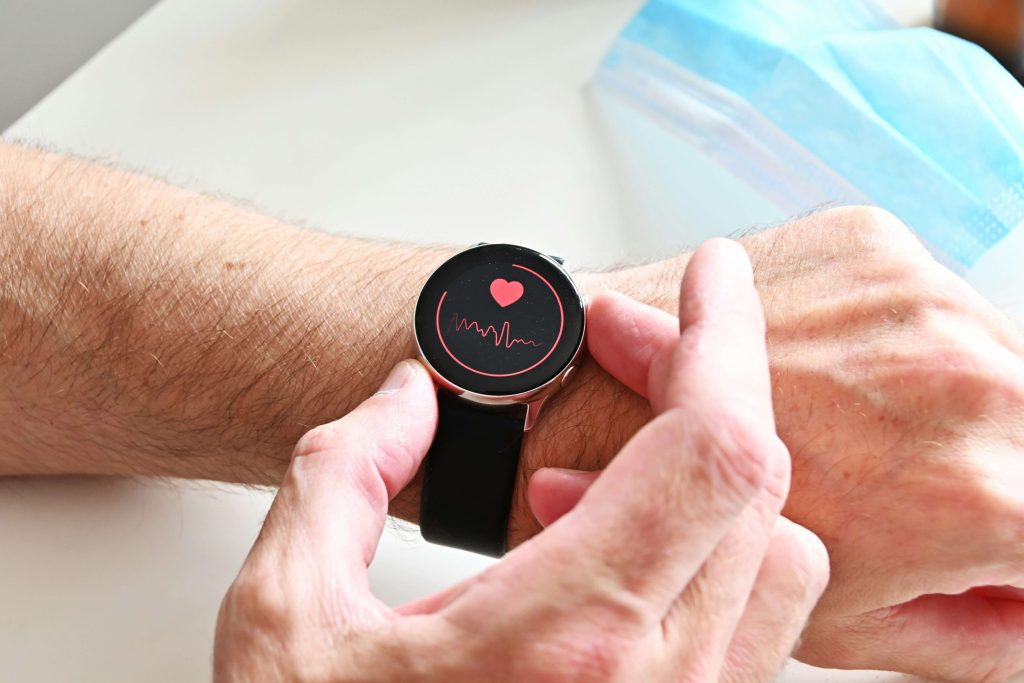Remember when you had to tap the side of the TV to fix the picture, or blow on a cassette tape to get your favorite song to play? Small actions made a big difference. Today, a similarly small action, rolling up your sleeve for the shingles vaccine, may do more than prevent a painful rash. New research suggests it could also lower your chances of a heart attack or stroke.
That’s a big claim. Let’s break it down clearly, without hype, so you can make a confident, well-informed decision.
Shingles 101 (and why hearts are part of the story)
Shingles is a painful, blistering rash caused by the varicella-zoster virus. The same virus that gave us chickenpox back when school pictures had bowl cuts and corded phones ruled the kitchen. After you recover from chickenpox, the virus goes quiet in your nerve roots and can “wake up” decades later as shingles. That reactivation doesn’t just hurt; it can trigger inflammation in blood vessels (a condition doctors call “vasculopathy”), which may temporarily raise the risk of stroke or heart attack. Multiple studies over the past decade have linked recent shingles to a short-term bump in cardiovascular events, especially stroke.

So the logic is simple: if shingles itself nudges cardiovascular risk upward for a time, then preventing shingles might reduce that risk. The key question has been: Does shingles vaccination actually translate into fewer heart attacks and strokes in the real world?
New research is pointing in the positive direction
A wave of recent analyses, spanning different countries and both shingles vaccines (the older live vaccine and today’s preferred Shingrix) all show a consistent association: people who get vaccinated have fewer major cardiovascular events than those who don’t.
- Global meta-analysis (presented at the 2025 European Society of Cardiology Congress): Looking across 9 studies, researchers found that shingles vaccination was linked to an 18% lower risk of major cardiovascular events in adults 18+, and 16% lower among adults 50+. These are associations, not proof of cause and effect, but the signal is consistent and biologically plausible.
- Large Korean cohort (published in European Heart Journal, 2025): Among 1.27 million adults who received the live shingles vaccine (no longer used in the U.S., but still informative), vaccination was associated with a 23% lower risk of a broad composite of cardiovascular outcomes. The benefit appeared to last up to eight years.
- U.S. study of today’s vaccine (Shingrix) in Clinical Infectious Diseases, 2025: In adults 50+ who completed two doses of Shingrix, vaccination was associated with lower risks of heart attack and stroke compared with matched unvaccinated peers. (Translation: after adjusting for many differences between groups, vaccinated people had fewer events over time.)

These studies used different methods and populations, but the story they tell is surprisingly consistent: shingles vaccination correlates with fewer heart and brain events.
Important perspective: Most of these findings come from observational data. They’re strong signals—but they do not prove the vaccine directly prevents heart attacks or strokes the way a randomized trial designed for cardiovascular outcomes would. Researchers and clinicians are appropriately cautious about claiming causality.
How does a shingles shot help our hearts and brains?
If you grew up cleaning record-player needles, you know a tiny bit of grit can ruin the sound. In a similar way, shingles can “grit up” your system with inflammation. After shingles, studies show a short-term increase in stroke and heart attack risk, likely due to inflammation of blood vessels and changes in blood clotting. Preventing shingles prevents that inflammatory hit, and may therefore lower the odds of a vascular event in the weeks to months after an infection would have occurred.
That’s the leading hypothesis behind the new data. We can’t declare cause and effect from observational research, but the biology lines up with what we know about shingles and vascular inflammation.
What this all means for you
When you hear “18% lower risk,” it’s natural to wonder, “Lower risk compared to what, and for whom?” Here’s a plain-English translation:
- Relative risk vs. absolute risk: An 18% relative reduction means that among people similar to you, those who were vaccinated had about one-fifth fewer major cardiovascular events than those who weren’t, over the study follow-up. Your absolute benefit depends on your baseline risk (age, blood pressure, cholesterol, diabetes, smoking history, and so on). People with higher baseline risk may see a larger absolute benefit.
- Consistency matters: Different datasets, countries, and vaccine types all pointed the same way. That consistency strengthens confidence that the signal is real, even if the exact size of the effect differs.
- Not a substitute for heart care: The shingles vaccine is not a replacement for statins, blood pressure control, exercise, or stopping smoking. Think of it like putting surge protection on your home electronics in the ‘90s: smart, additive protection—not the whole system. (And unlike surge protectors, Shingrix also prevents a truly miserable rash.)
Who should get vaccinated?

In the United States, the CDC recommends shingles vaccination for all adults 50 and older (two doses, 2–6 months apart). Adults 19 and older who are immunocompromised should also receive it, and they may follow a shorter 1–2 month interval when appropriate. There is no maximum age. You can get a shingles vaccination even if you already had shingles or got the older vaccine years ago.
Safety and side effects (what to expect)
Most people experience temporary soreness in the arm, sometimes with fatigue, muscle aches, headache, or low-grade fever for a day or two. More noticeable after the second dose. Serious reactions are rare. Large post-marketing safety studies have not shown sustained increases in serious events compared with unvaccinated or previously vaccinated groups. If you’ve got a big event the next day, consider scheduling the shot with a little buffer, just like you once planned around a big presentation and a dial-up internet connection.
Answers to common questions
- “I already had shingles, do I still need the vaccine?”
- Yes. Prior shingles doesn’t guarantee future protection. Shingrix can lower your chance of getting shingles again and reduce severe complications like postherpetic neuralgia.
- “I have heart disease. Is the shingles vaccine for me?”
- In general, yes, and keep must up with your cardiology plan. The new data suggest a potential additional cardiovascular benefit of vaccination, but it complements (doesn’t replace) your medications, healthy eating, physical activity, and blood pressure/cholesterol management. Talk with your doctor if you’ve recently had an acute event so they can time your doses well.
- “What if I got the old shingles shot years ago?”
- Zostavax (the older live vaccine) is no longer used in the U.S. If you had it, you can and generally should still get Shingrix for stronger, longer-lasting protection.
- “Will my insurance cover it?”
- Most plans, including Medicare Part D, cover shingles vaccination for eligible adults. Coverage can vary by plan and pharmacy, so it’s worth a quick call first. (Check your plan details.)
Practical next steps (a simple, low-friction plan)

- If you’re 50 or older: Put shingles vaccination on your to-do list alongside your next checkup. Dose 1 now; dose 2 in 2–6 months. Set a reminder (calendar, sticky note on the fridge, or a Post-it on your VCR if you still have one).
- If you’re immunocompromised (19+): Ask your clinician about the shingles vaccination and whether the 1–2 month interval fits your situation.
- If you manage blood pressure or cholesterol: Keep doing the basics. Vaccination is an add-on, not a replacement, for the everyday habits and medications that protect your heart.
- If you had recent shingles: Once you’ve recovered, talk with your clinician about the best timing for vaccination to prevent a recurrence.
- If you’re a caregiver or adult child helping a parent: Put the shingles vaccine on your shared “health maintenance” checklist. Right next to flu, COVID/RSV (as appropriate), and routine screenings. It’s one of those small steps that can spare a lot of suffering later.
Bottom line: a small shot = potentially outsized upside
If you came of age making mixtapes, you know the magic of getting the little things right. The shingles vaccine is one of those little things already recommended to prevent a painful disease, and now consistently associated with fewer heart attacks and strokes in large real-world studies. While scientists are careful about causality, the evidence trend is encouraging, the safety profile is well-characterized, and the practical burden is low: two doses and you’re done.
If you or a loved one is navigating aging, caregiving, or simply trying to stack the odds toward a healthier future, consider making the shingles vaccine part of your plan.
Need support at home?
If you or someone you love could benefit from compassionate, reliable home care, from help with daily activities to respite for family caregivers, Happy Mountain Home Care is here to help. Call 954-654-8186 or visit www.happymtn.com to talk with a caring professional about your options today.
Sources: European Society of Cardiology 2025 meta-analysis; Clinical Infectious Diseases 2025 (U.S. Shingrix study); European Heart Journal 2025 (Korean cohort); CDC guidance.

